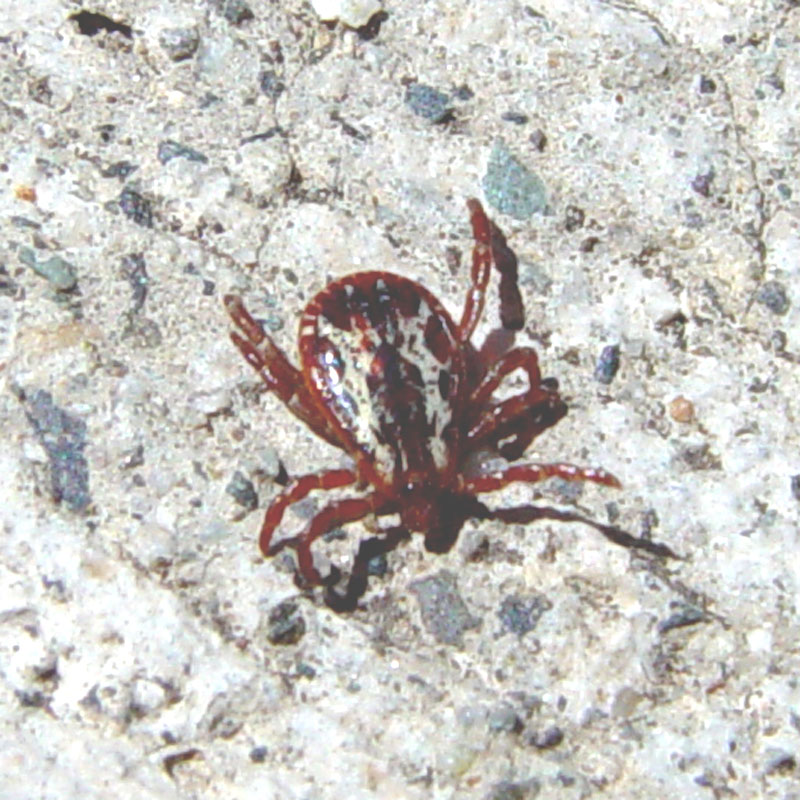Wood tick safety – what to know
Some really good information everyone should be aware of when camping or hiking this summer regarding wood ticks.

40,000 cases of Lyme disease are documented in North America every year and health experts are predicting 2012 to be the worst year for Lyme risk ever. Are companies protecting their outdoor workers adequately? Here are important facts to know about ticks and tick protection…
(Courtesy of www.tickencounter.org)
10. Ticks crawl up
Ticks don’t jump, fly, or drop from trees onto your head and back. If you find one attached there, it most likely latched onto your foot or leg and crawled up over your entire body.
9. All ticks (including deer ticks) come in small, medium and large sizes
8. Ticks can be active even in the winter That’s right! Deer Ticks in particular are not killed by freezing temperatures, and will be active any winter day that the ground is not snow-covered or frozen.
7. Ticks carry disease-causing microbes
Tick-transmitted infections are more common these days than in past decades. With explosive increases in deer populations, extending even into semi-urban areas in the eastern and western U.S., the trend is for increasing abundance and geographic spread of deer ticks and Lone Star ticks; and scientists are finding an ever-increasing list of disease-causing microbes transmitted by these ticks: Lyme disease bacteria, Babesia protozoa, Anaplasma, Ehrlichia, and other rickettsia, even encephalitis-causing viruses, and possibly Bartonella bacteria. Back in the day, tick bites were more of an annoyance but now a bite is much more likely to make you sick.
6. Only deer ticks transmit Lyme disease bacteria
The only way to get Lyme disease is by being bitten by a deer tick or one of its “cousins” found around the world.
5. For most tick-borne diseases, you have at least 24 hours to find and remove a feeding tick before it transmits an infection Even a quick daily tick check at bath or shower time can be helpful in finding and removing attached ticks before they can transmit an infection. Lyme disease bacteria take at least 24 hours to invade the tick’s saliva.
4. Deer tick nymphs look like a poppy seed on your skin And with about 1 out of 4 nymphal deer ticks carrying the Lyme disease spirochete and other nasty germs in the northeastern, mid-Atlantic, and upper mid-western U.S., it’s important to know what you’re really looking for. They’re easy to miss, their bites are generally painless, and they have a habit of climbing up (under clothing) and biting in hard-to-see places.
3. The easiest and safest way to remove a tick is with a pointy tweezer Using really pointy tweezers, it’s possible to grab even the poppy-seed sized nymphs right down next to the skin. The next step is to simply pull the tick out like a splinter.
2. Clothing with built-in tick repellent is best for preventing tick bites An easy way to avoid tick bites and disease is to wear clothing (shoes, socks, shorts or pants, and shirt) with Insect Shield® tick repellent built-in.
1. Tick bites and tick-borne diseases are completely preventable There’s really only one way you get a tick-transmitted disease and that’s from a tick bite. Reducing tick abundance in your yard, wearing tick repellent clothing every day, treating pets every month and getting into a habit of doing a quick body scan are all great actions for preventing tick bites.
Insect Shield Tick Repellent Work Wear Insect Shield’s EPA-registered technology converts clothing and gear into effective and convenient insect protection. The repellency lasts through 70 washings, the expected lifetime of a garment. www.insectshield.com/work (I am not affiliated- just recommend)
Quick Facts:
Repellency is built into the clothing and gear
Lasts through 70 launderings
No restrictions for use
No need to re-apply
Repels mosquitoes, ticks, ants, flies, chigger and midges including those that can cause Lyme disease, malaria and other dangerous insect-borne diseases.
(Courtesy of Keith Powell of Koocanusa Publications Inc.)
Where there are wood ticks – there probably are mosquitos – click on the picture below and get your own mosquito zapper.


